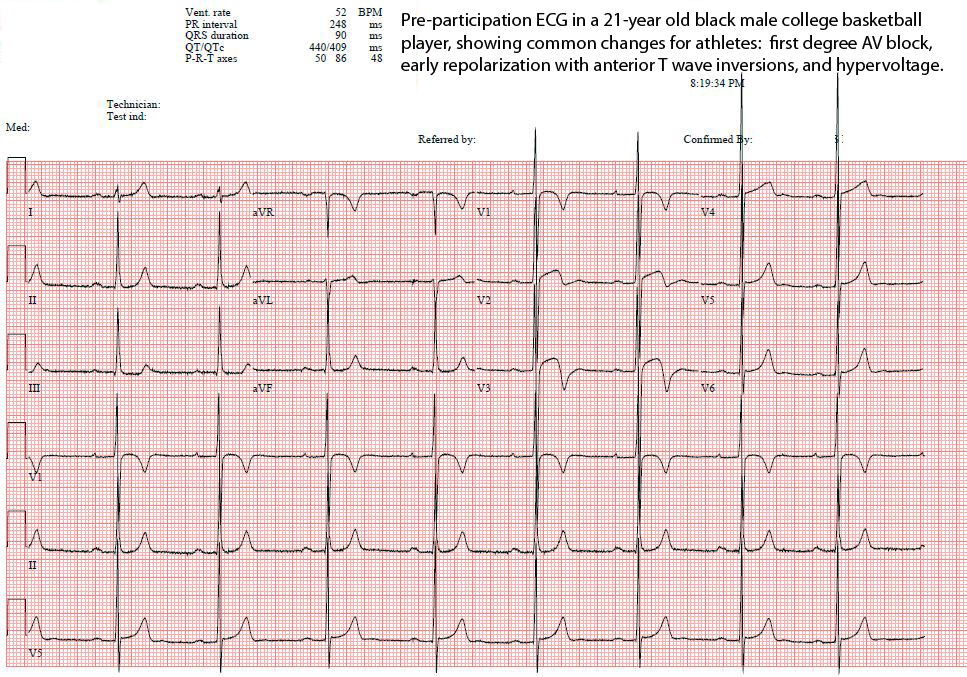A 21-year-old black male basketball player undergoes a routine pre-participation physical. He reports no symptoms, and there is no family history of cardiomyopathy, sudden cardiac death, or premature coronary artery disease. On examination, his blood pressure is 132/61 mm Hg, and cardiac auscultation reveals no murmurs standing, supine, or with Valsalva maneuver. The remainder of the examination is normal. The results of a routine pre-participation electrocardiogram (ECG) can be seen in Figure 1.
Figure 1
The correct answer is: A. Allow athlete to participate in training; no additional testing needed.
This ECG is considered within normal limits based on modern criteria for athletes, and therefore no additional testing is required. There are several findings on this ECG that would be classified as abnormal in the general population, but are considered within normal limits for athletes:1-3
- Voltage Criteria for Left Ventricular Hypertrophy (LVH): Approximately 40% of athletes' ECGs manifest voltage criteria for LVH due to athletic remodeling of the heart and generally thin body habitus. Modern criteria for interpreting athletes' ECGs classify hypervoltage as a normal variant. However, it is considered abnormal if there are associated repolarization abnormalities, including inferolateral T wave inversions or ST segment depression.
- First-Degree Atrioventricular Block (AVB): Cardiac adaptation to exercise can also include autonomic remodeling with increased vagal tone. This may manifest on the ECG as sinus bradycardia (with or without escape rhythms), first-degree AVB, or Mobitz type I second-degree AVB(Wenckebach). Higher-degree AVB are considered abnormal and warrant further evaluation.1-3
- Anterior T Wave Inversions: The pattern of T wave inversions seen on this ECG includes ST segment elevation, followed by T wave inversion seen partially in V2 but more prominently in V3. This pattern of anterior septal and anterior wall T wave inversion is considered a normal variant of early repolarization seen in some black athletes. T wave inversions that occur in absence of ST segment elevation, or those extending beyond lead V4, are considered pathologic. These changes are much less common in non-black athletes and should be considered abnormal until additional data in these groups is available.
References
- Corrado D, Pelliccia A, Heidbuchel H, et al. Recommendations for interpretation of 12-lead electrocardiogram in the athlete. Eur Heart J 2010;31:243-59.
- Drezner JA, Ackerman MJ, Anderson J, et al. Electrocardiographic interpretation in athletes: the 'Seattle Criteria'. Br J Sports Med 2013;47:122-4.
- Drezner JA, Fischbach P, Froelicher V, et al. Normal electrocardiographic findings: recognising physiological adaptations in athletes. Br J Sports Med 2013;47:125-36.

